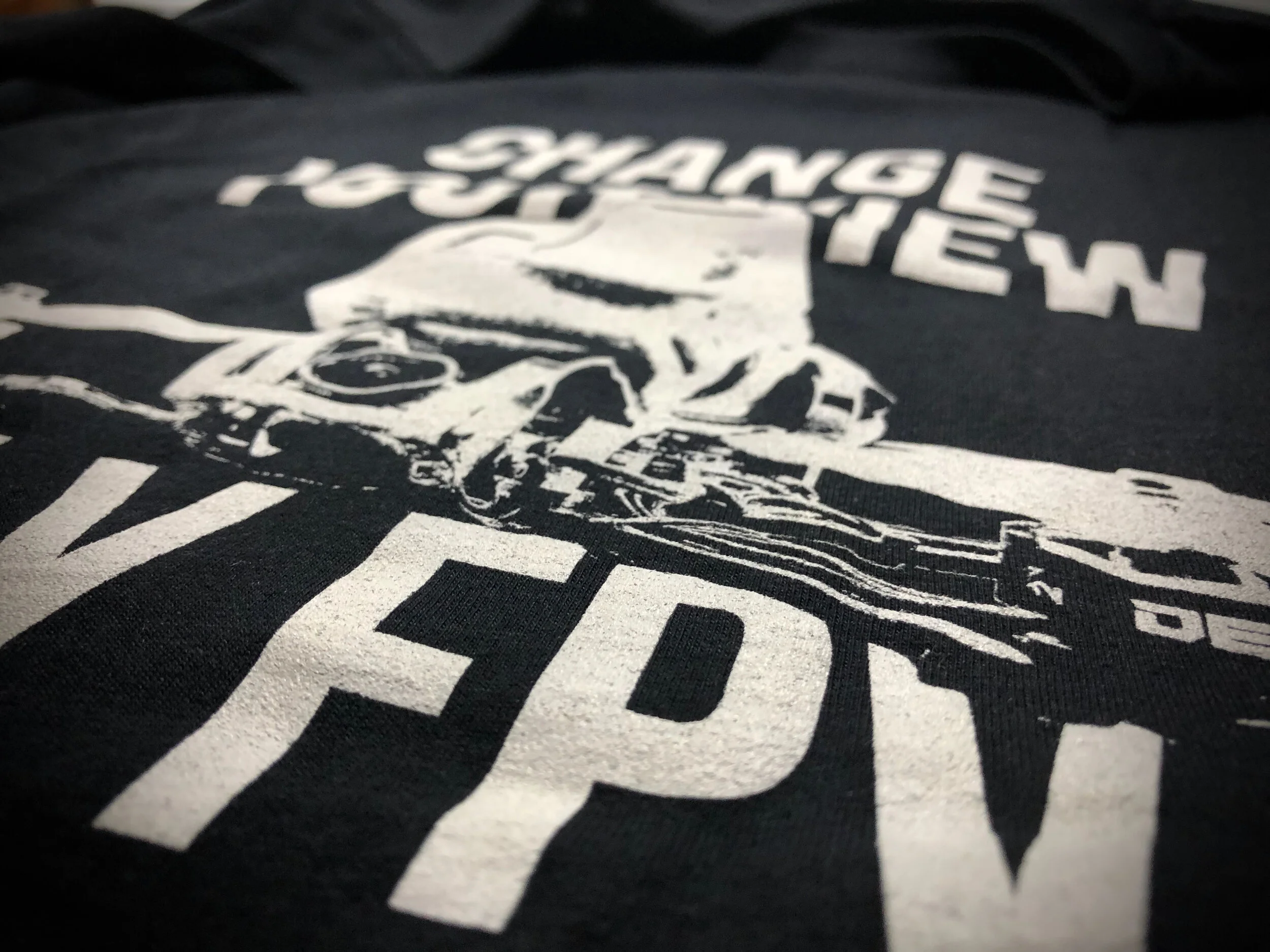Remote ID Final Rule Summary
Remote ID Effective Dates:
Manufacturers: 60 days + 18 Months: September 16, 2022
Operators: 60 day + 30 Months: September 16, 2023 ( or March 16, 2024 with the enforcement extension. )
FRIA: Application submission start date: September 2022
Remote ID Types and Requirements:
Standard Remote ID (SRID):
Remote ID integrated into the UAS (vehicle and control station)
Operates from takeoff to shutdown
Operator must land as soon as practicable if RID stops broadcasting
Serial Number is listed on an FAA-accepted declaration of compliance OR
Design approval or Production approval issued under Part 21 and meets subpart F
Message Requirements
Broadcasts the following messages:
Identity of aircraft – Serial number issued by producer or a Session ID
Latitude, longitude, geometric altitude of control station
Latitude, longitude, geometric altitude and velocity of the unmanned aircraft
Time mark identifying applicability of a position output in UTC.
Emergency status of the unmanned aircraft
Self-Test Requirements
Prior to takeoff, RID functionality must be automatically tested and results reported to operator of flight controls
Unmanned aircraft must not be able to takeoff if RID equipment is not functional
Must continually monitor RID equipment functionality from takeoff to landing for malfunction or failure and report status to person manipulating the flight controls
Tamper Resistant
Error Correction
Must incorporate error correction in broadcast.
Interference Considerations
Message Broadcast must not interfere with systems on the aircraft and other systems on the aircraft must not interfere with RID equipment
Message Transmission Requirements
Non-proprietary using radio frequency compatible with personal wireless devices in accordance with part 15 of title 47, Code of Federal Regulations where operations may occur without FCC individual license
Must be integrated into the unmanned aircraft without modification to its authorized radio frequency parameters
Designed to maximize range of message elements
Comply with part 15 of title 47 Code of Federal Regulations
Message Performance Requirements
Geometric position of the aircraft and control station accurate to within 100 feet of true, with 95% probability
Geometric altitude of control station accurate to within 15 feed of true with 95% probability
Geometric altitude of aircraft accurate to within 150 feet of true with 95% probability
Broadcasts message elements at 1hz (once per second) no later than one second after the measurement of position
Unmanned aircraft must not be able to takeoff unless transmitting all required message elements
Labeling
Must have label on unmanned aircraft stating that it meets the requirements.
Label must be in English, legible, prominent, and permanently affixed to unmanned aircraft
Broadcast Module Remote ID (MRID):
Remote ID as an add-on component to an otherwise non-compliant unmanned aircraft
Same requirements as above, with the following exceptions:
The person operating the unmanned aircraft must be able to see the unmanned aircraft at all time throughout the operation
Module not required to be integrated into Unmanned Aircraft system
Will not restrict takeoff
Operator responsible for not initiating takeoff if MRID system not functional or not broadcasting messages
Serial number of aircraft changed to serial number of module, assigned by the producer
Not integrated into Control Station
Requirement to report location data of control station elements changed to location data of point of takeoff.
Geometric location of takeoff position accurate to within 100 feet of true with 95% probability
Geometric altitude of takeoff position accurate to within 150 feet of true with 95% probability
Labeling
Must have label on module stating that it meets the requirements.
Label must be in English, legible, prominent, and permanently affixed to module
No Remote ID (NRID):
Restricted to flying in an FAA Recognized Identification Area (FRIA)
The person operating the unmanned aircraft must be able to see the unmanned aircraft at all time throughout the operation
FAA Recognized Identification Area (FRIA):
Only two types of organizations are eligible to apply for establishment of a FRIA
Community Based Organizations (CBO’s)
Educational Institutions
Primary and Secondary Schools
Trade Schools
Colleges and Universities
Duration of FRIA’s
Once approved, FRIA is recognized for 48 calendar months
Renewals submitted minimum of 120 days before expiration
If renewal is not submitted, FRIA will expire automatically
Termination
Individual point of contact can request the termination of FRIA
FAA can terminate a FRIA if:
Area poses risk to aviation safety, public safety, homeland security, or national security
FRIA is no longer associate with person eligible for FRIA
Person who submitted the requests provided false or misleading information during submission, amendment, or renewal
Amendment
Any change to the FRIA should be submitted
Point of Contact Change
Organizational Change
Geographic boundary change can be requested for the FAA to review
Change will not be effective unless approved
Registration
Registration for Recreational
Fees
Per operator basis, $5 for the operator
Changes to Information Required
Standard Remote ID Aircraft Serial number issued by manufacturer
Serial number valid for only one registration
Module Remote ID serial number issued by manufacturer
May submit multiple module serial numbers if in use
Registration for Part 107
Fees
Per aircraft basis, $5 per aircraft to be flown under Part 107 conditions
Changes to Information Required
Standard Remote ID Aircraft Serial number issued by manufacturer
Serial number valid for only one registration
Module Remote ID serial number issued by manufacturer
May submit multiple module serial numbers if in use
Home-Built Unmanned Aircraft
A “home-built unmanned aircraft” is defined by the FAA as: “an unmanned aircraft that an individual built solely for education or recreation”
A home-built unmanned aircraft is not subject to the design or production requirements of the producer as long as there is some level of assembly by the end user
Example: Company A provides a recreational ready to fly quadcopter that does not include an RF receiver. Because the kit is incomplete, the company is not subject to the design or production requirements. Because the quadcopter was built for either education or recreation, the end user is also not subject to the design or production requirements
The operator is however required to comply with the Remote ID rules above
Means of Compliance
Any person can submit a means of compliance for the design and production of a Standard Remote ID UAS or a Remote ID Broadcast Module to the FAA.
Must submit the following information to the FAA:
Name of person or entity (company) as well as the main point of contact for communications with the FAA
Physical address
Email address
Any other contact information
Detailed description of the means of compliance
Explanation of how the means of compliance satisfies all the minimum performance requirements of the SRID or MRID
Any more details that the person would like the FAA to consider in the request
Must include testing and validation procedures:
Analysis
Ground Tests
Flight Tests
How it performs the intended functions
How it meets the minimum performance requirements
Must demonstrate that the means of compliance addresses all of the minimum performance requirements and that all SRID or MRID devices produced under the means of compliance would meet the performance requirements
Remote ID Design and Production
Serial Numbers
No person or organization may produce a Standard Remote ID or Remote ID Broadcast Module without a serial number
Serial number must comply with ANSI/CTA-2603-A
Production
No person or organization may produce an unmanned aircraft for use in the United States unless:
Complies with all applicable requirements of Part 21
Unmanned aircraft is:
Designed and produced to the minimum performance requirements for standard remote ID and has an FAA approved means of compliance
Production requirements without design or production approval
Unmanned aircraft is designed and produced to meet the minimum performance standards for Standard Remote ID in accordance with and FAA-accepted means of compliances
All the following condition are met:
A person responsible for the production of a Standard Remote ID aircraft must allow the FAA to inspect the persons facilities technical data, and any SRID aircraft the person produces and to witness any tests to determine compliances
Person responsible for production of SRID unmanned aircraft must have independent audits performed on a recurring basis and also when the FAA provides a notice of noncompliance or potential non-compliance to prove the unmanned aircraft listed on the declaration of compliance meets the minimum performance requirements
Audits must be provided to the FAA upon request
Product Support
Must maintain product support and notification procedures to notify the public and the FAA of any defect or condition that causes an unmanned aircraft to no longer meet the requirements within 15 days of becoming aware of the issue
Production requirements for Remote ID Broadcast Modules
Must be designed and produced to meet the minimum performance requirements of Remote ID Broadcast Modules
Same requirements as above, with the addition of:
Instructions:
Person responsible for the production of MRID units must make available instructions for installing and operating the MRID Unit to any person operating an unmanned aircraft with the MRID unit
Labeling
No person can produce a SRID unmanned aircraft unless it displays a label indicating that the unmanned aircraft meets the requirements of Standard Remote ID
Label must be in English, be legible, prominent and permanently affixed to the unmanned aircraft
No person can produces an MRID unit unless it displays a label indicating that the equipment meets the requirements of MRID
Label must be in English, be legible, prominent and permanently affixed to the Module
Submission of a Declaration of Compliance for FAA Acceptance
Person responsible for the production of a SRID unmanned aircraft or MRID unit must submit a declaration of compliance for acceptance by the FAA
Required Information for SRID unmanned aircraft:
Must declare that the SRID unmanned aircraft or the MRID unit complies with the minimum performance requirements in a form and manner acceptable to the FAA
Name, physical address, telephone number, and email of the person responsible for production
Unmanned aircrafts make and model
Serial number or range of serial numbers for which the person responsible is declaring compliance
FCC ID of the 47 CFR part 15 radio frequency used and integrated into the unmanned aircraft
Whether it is an initial declaration or an amended declaration
If an amended declaration, reason for amendment
Declaration that the person responsible for production of the unmanned aircraft:
Can demonstrate that the unmanned aircraft was designed and produced to meeting the minimum performance requirements using an FAA-accepted means of compliance
Complies with the requirements of 89.515b
Statement that 47 CFR part 15 compliant radio frequency equipment is used and is integrated into the unmanned aircraft without modification to its authorized radio frequency parameters
Required information for MRID units
Name, physical address, telephone number, and email of the person responsible for production
MRID unit make and model
Serial number or range of serial numbers for which the person responsible is declaring compliance
FCC ID of the 47 CFR part 15 radio frequency used and integrated into the unmanned aircraft
Whether it is an initial declaration or an amended declaration
If an amended declaration, reason for amendment
Declaration that the person responsible for production of the MRID unit:
Can demonstrate that the unmanned aircraft was designed and produced to meeting the minimum performance requirements using an FAA-accepted means of compliance
Complies with the requirements of 89.520b
Statement that 47 CFR part 15 compliant radio frequency equipment is used and is integrated into the unmanned aircraft without modification to its authorized radio frequency parameters
Statement that instructions have been provided for installation of the MRID module without modification to the authorized radio frequency parameters
Acceptance of a Declaration of Compliances
The FAA with evaluate a declaration of compliance that is submitted and may request additional information or documentation as needed to supplement the declaration
If the FAA determines that the submitter has demonstrated compliance, the FAA will notify the submitter that the declaration has been accepted
Rescission and Reconsideration
Any declaration and compliance is subject to ongoing review by the FAA. The FAA may rescind an acceptance of a declaration of compliances for reasons including but not limited to:
SRID unmanned aircraft or MRID unit does not meet the minimum performance requirements
A previously accepted declaration of compliances does not meet and requirement
FAA rescinds acceptance of a means of compliances listed in an FAA accepted declaration of compliance
FAA will notify the person who submitted the FAA accepted declaration of compliance of any issue of noncompliance
If the FAA determines that it is in the public interest prior to rescinding a declaration of compliance, they may provide a reasonable period to remediate the noncompliance
Failure to remediate the noncompliance is cause for rescission of the declaration of compliance
FAA will notify the person who submitted the declaration of compliance of a rescission by publishing a notice of rescission in the Federal Register
Appeal
The person who submitted the declaration of compliance or any person adversely affected by the rescission may petition the FAA to reconsider by submitting a request to the FAA with 60 calendar days of the date of publication to the Federal Register
Petition must demonstrate one of the following:
Additional facts not previously presented to the FAA
FAA made a material error of fact in the decision
FAA did not correctly interpret a low, regulation, or precedent
FAA will notify the petitioner and the person who submitted the declaration of compliance, if different, of the decision on whether to reinstate the declaration of compliance
Record Retention
A person who submits a declaration of compliances that is accepted by the FAA must retain the following information for as long as the SRID unmanned aircraft or MRID Unit listed on that declaration of compliance is produced plus an additional 24 calendar months and must make available for inspection upon request
Means of compliances, all documentation, and substantiating data related to the means of compliance
Records of all test results
Any other information necessary to demonstrate compliance so that the SRID unmanned aircraft or MRID unit meets the remote ID minimum requirements and the design and production requirements







